It’s the stuff of science fiction or horror, the plot of some M. Night Shyamalan flick. But it actually happened! And, it was practically in my own backyard. A field of hybrid Bermuda grass that’s been happily feeding a Texas cattle rancher’s small herd for the past 15 years spontaneously started producing cyanide gas, killing 15 of his 18 cattle.
K-EYE TV in Austin, TX broke the story yesterday, sharing how the mysterious mass death of the herd has prompted a federal investigation. Just a few short weeks ago, Jerry Abel opened the gate to a field containing lush Tifton 85 grass and let his herd in for the first time this year. It was a hot Texas day, and the cattle were eager to chow down on some tall, green grass. According to the news story, the grass is a genetically-modified version of Bermuda grass. It’s higher protein and specifically designed to be better for feeding livestock, making hay, and withstanding fluctuations in weather.
Not long thereafter, the bellowing began. Thinking one of the pregnant heifers was possibly trying to have a calf, they raced to the field — only to find all the steers and heifers on the ground in agonizing pain.
Choking up, Abel says, “That was very traumatic to see, because there was nothing you could do, obviously, they were dying.”
The preliminary autopsy report revealed that the grass, which had been successfully feeding Abel’s herd for 15 years, had spontaneously started emitting poisonous cyanide gas. Right now, they’re guessing the mutation was prompted by the extreme drought Texas ranchers faced last year, although it’s all just speculation.
Watch the video
Local farmers, prompted by the news, have begun testing their own Tifton 85 grasses, only to find that they, too, have fields that are now toxic with cyanide.
Scientists at the United States Department of Agriculture are testing the various grass samples, trying to determine exactly what caused the mutation.
What does it all mean?
I couldn’t help but draw the parallel to the 2008 version of the movie The Happening, written and directed by M. Night. Shyamalan. In the film, the plants mysteriously start producing a neurotoxic gas that prompts humans who get a whiff of it to commit suicide. The message? The plants are angry with us! They want us to stop destroying the planet!
While I don’t believe the Tifton 85 grass is sentient, I do think this recent turn of events is a warning.
Messing with genetics is dangerous and unpredictable. We need to remember that. If a hybrid grass can suddenly mutate and start producing cyanide, then some of the widely-circulated theories about the dangers of the terminator gene don’t seem so unreasonable. Do we really want these unnatural genes released into the world, where they’ll take on a life of their own? Genetic contamination is real. Plants cross-pollinate. It’s natural. It’s wild. It’s the way the world works.
We can’t continue to assert that genetically-modified plants are safe, are contained to specific fields, are controlled. It was an illogical argument before, and in the wake of this most recent news from central Texas ranchers, it’s even more untenable.
Read the full story at K-EYE TV here.
ETA: The original network news stories all reported this grass to be a “genetically-modified hybrid.” In truth, it is a first generation, naturally-bred hybrid. In my mind, this makes the story no less cautionary, although it is a bit less sensational.
One Facebook commenter had this to say: “I have a degree in biochemistry. GMO is simply speeding up or creating a new ‘hybrid’ in a much faster lab setting than the slow natural (think Natural Selection) setting of nature. Both methods involve HUMANS intentionally combining genes that wouldn’t ordinarily be combined, or would take hundreds or thousands of years to SAFELY combine. At the end of the day, it is humans manifesting our arrogance that we have it all figured out, are smarter than mother nature and somehow know better than nature does about what’s good for us.” I agree with her opinion.
While it is certainly true that this Tifton 85 grass falls into the category of a cross that you or I could casually make in our own garden, many of the comments in the discussions circulating around the various reports done on this news story make me want to point out something. “Genetically-modified” and “hybrid” are not automatically two mutually exclusive terms. If you see something described as an “F1 hybrid,” that’s merely describing that it’s a first generation genetic cross between two parent cultivars. It does not automatically mean that there was no genetic modification done to the plant, nor does it necessarily mean that the plant is “safe” and “natural.” The word “hybrid” is like the word “flower.” A tulip is a flower, and so is a rose. But a rose is not a tulip. Likewise, “hybrid” is an umbrella word that can describe both genetically-modified hybrids and naturally-bred hybrids. One is “natural,” and what gardeners and farmers have always done. The other is unnatural and can have dire and unforeseen consequences.
Furthermore, even plants that are naturally-bred hybrids can be genetically-altered post-breeding to introduce sterility. This is often the case with commercially-produced hybrids. In order for most hybrid plants to be commercially viable, they have to be sterile. They are too costly to produce otherwise. That’s so that the seed patent owner can sell you new seeds each year. As in the case of Tifton 85, this sterility can be accomplished naturally through selectively breeding the plants. But more often than not it is accomplished in laboratories through the marvel of biochemical engineering (either by using genetic-modification or chemicals to interrupt the expression of genes).
So, what does this mean for our the discussion? Even if we all agree to label the Tifton 85 a “hybrid,” you still have to marvel that the creator of this grass variety didn’t think it would matter that a parent cultivar for their hybrid was a known cyanide-producing African grass. Many grasses do this under stress, but the Tifton 85 was specifically bred not to. It was created expressly as a feed grass for livestock and designed to hold up well to fluctuating weather conditions, including drought. The manufacturer of this grass thought it was “safe,” that they could accurately predict the outcome of their cross-pollination, that they’d bred out the tendency for the the plant to produce cyanide under stress. Unlike with Johnson grass or Sorghum (two other popular grasses that produce cyanide under stress), the manufacturers never warned their customers about this potential outcome. I think it was because 1) in their conceit, they never imagined it was possible, or 2) because in their greed, they didn’t want to unnecessarily scare off buyers.
There is more to discuss, but I wanted to update this post with some of the more interesting revelations of the past day in the hopes of discouraging repetitive comments and encouraging even more fascinating conversations!
(photo by agrilifetoday)
 |

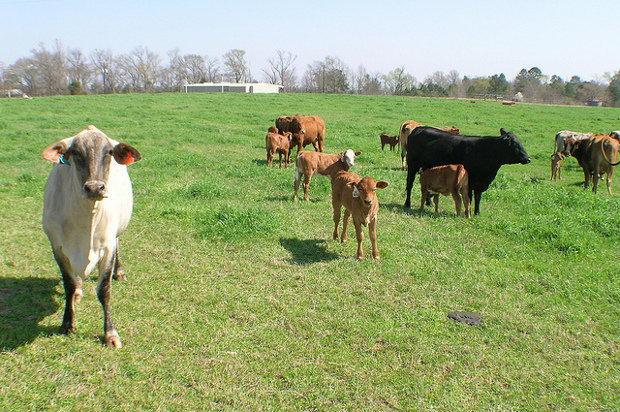


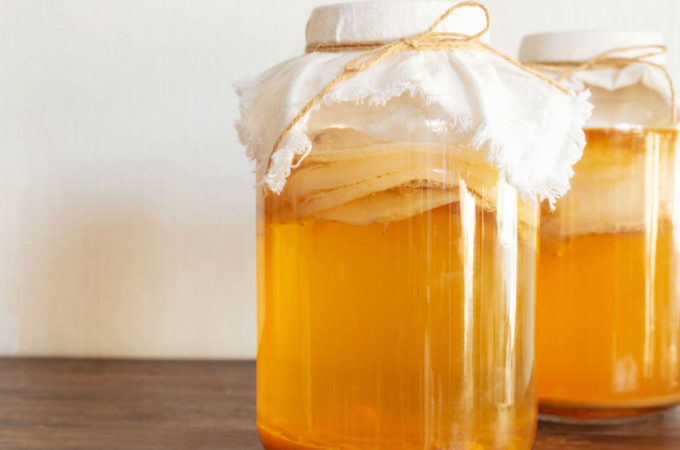
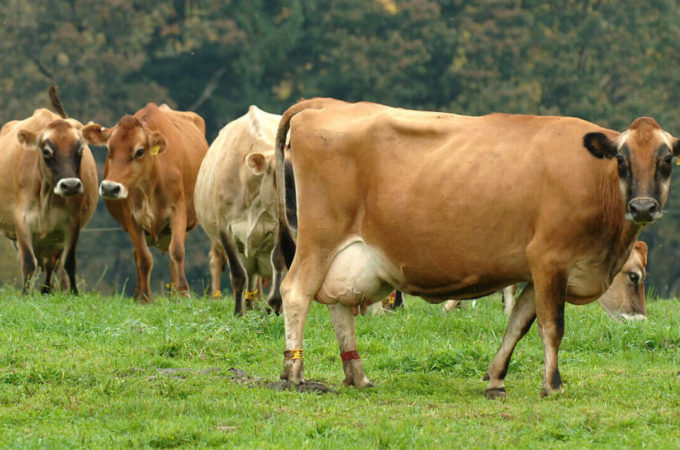
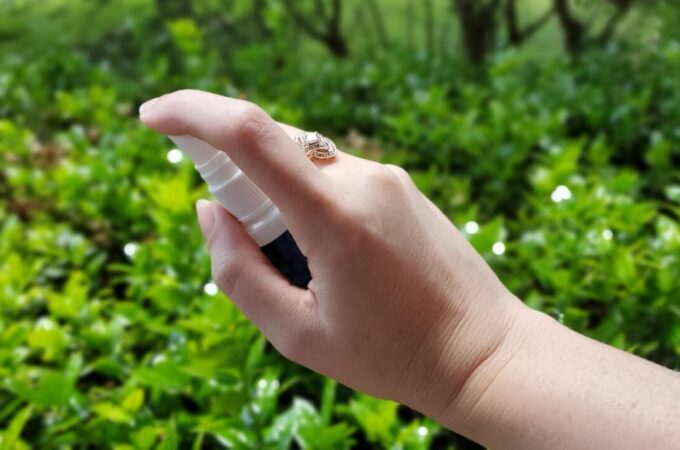
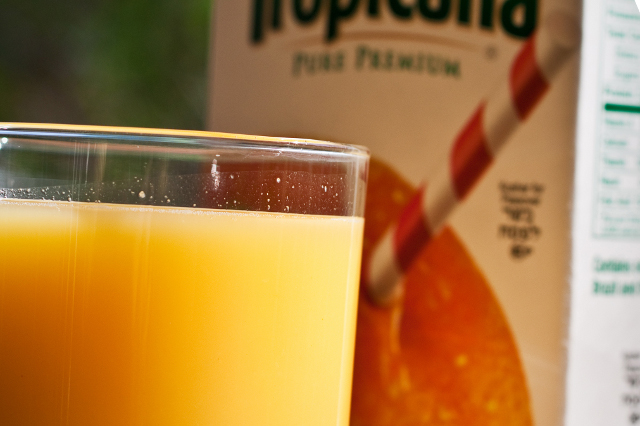
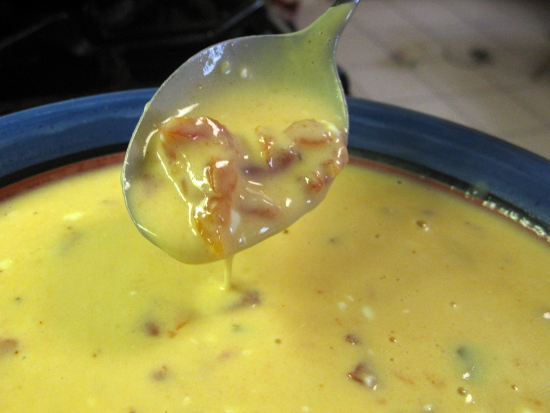
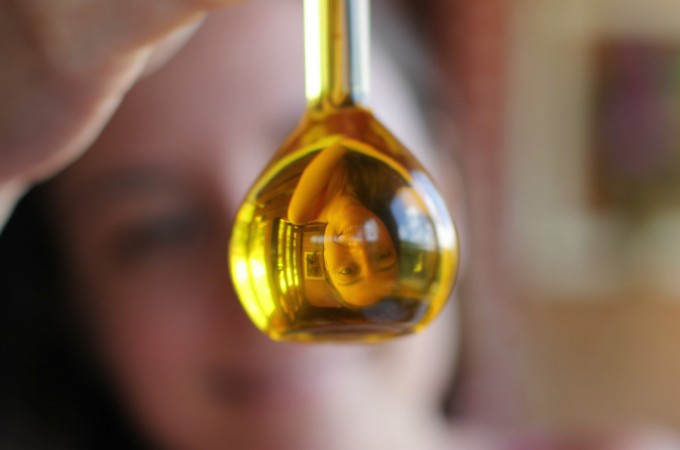
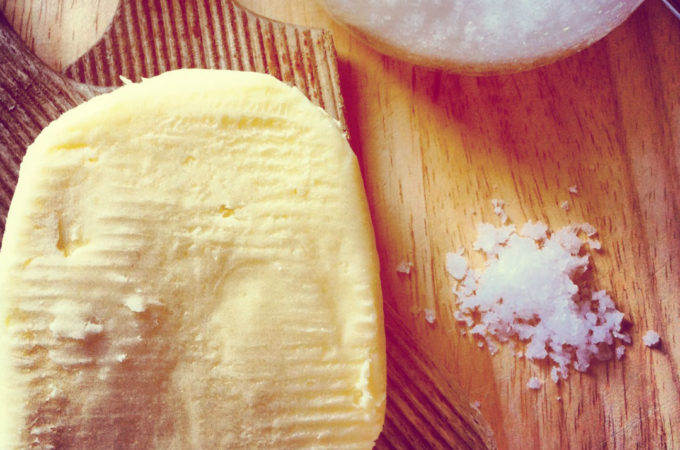
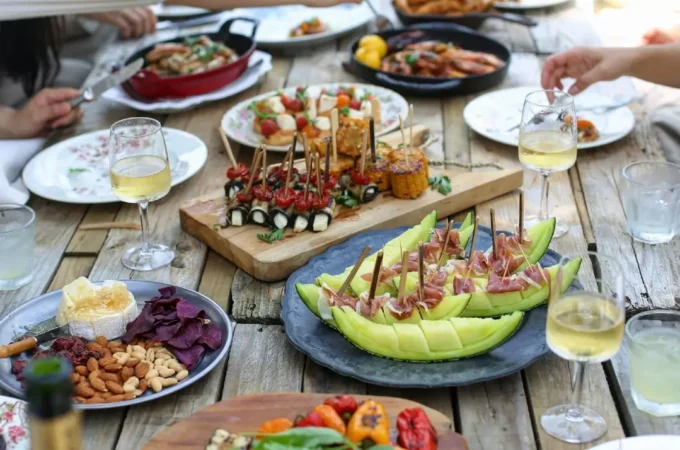
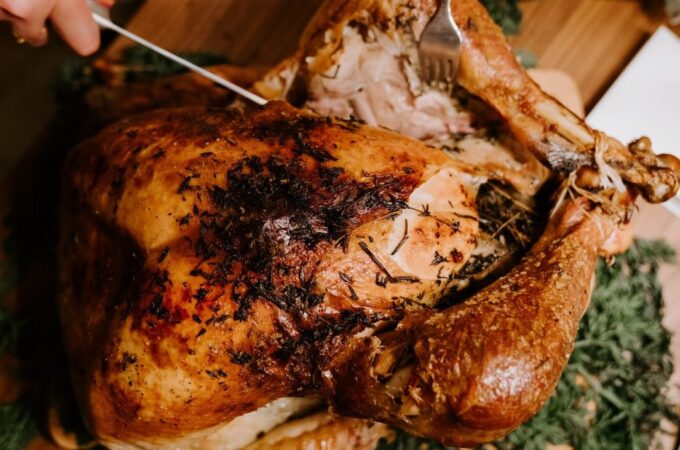


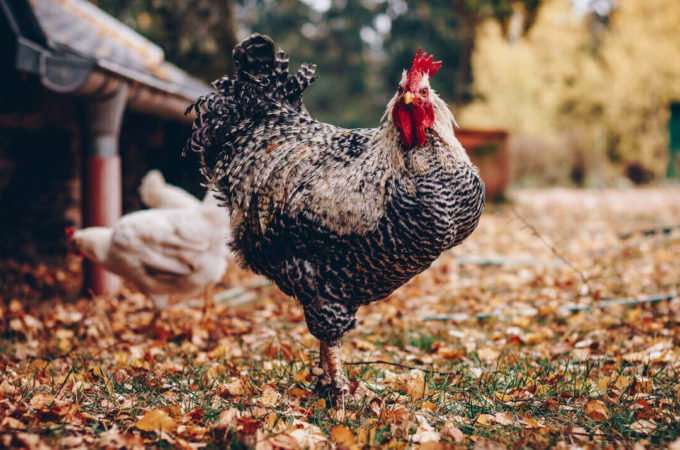
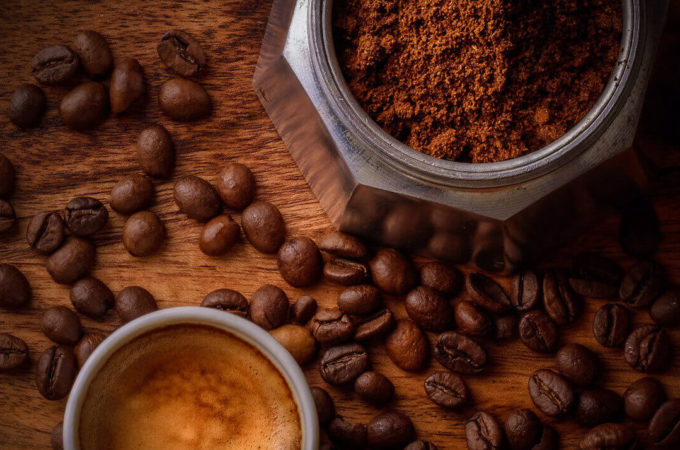
im sickened by this…:(
Disgusting on so many levels. Makes me very angry.
Reminds me of something natural childbirth guru, Dr. Bradley used to say: It’s not nice to fool with Mother Nature!
Does this mean that when we go out of our way to eat grass-fed/grass finished beef that the cows are eating GMO grass?
*sigh* WOW.
Whoa.
Probono Eyecandy — I think that depends on the rancher. You’d have to ask to find out.
Uh oh, this is really disturbing.
This is insanity come to life!
thanks for alerting us to this. makes me sick at heart.
Can’t help but wonder how “spontaneous” it actually is…
now there is johnson grass that is not GMO and makes cyanide, are we sure it was the GMO aspect?
So…if the grass was growing for 10 years and has genetically modified, what about the effect on the grazing animals and the humans that may eat them, genetically speaking? Makes ya think.
Under seige from a GMO mutation – welcome to one future scenario of our food chain in action.
So grass-fed meat and dairy that I’ve been eating/drinking may have come from cows eating GM grass? This is so disturbing on so many levels.
SHARED!!
I didn’t even know there was GM grass…
Did they check for Grass Tentany aka grass staggers?
http://www.cbsnews.com/8301-201_162-57459357/gm-grass-linked-to-texas-cattle-deaths/
Unintended consequences. Turns out Tifton 85 is a hybrid between Bermuda Grass and Star Grass, which is from Africa. And which on it’s own has been known to be high in cyanide. http://www.ehow.com/list_6190669_plants-african-savannah.html
That’s really sad and awful.
The Tifton 85 Bermuda grass is not GMO. It’s an F1 hybrid. Still very scary what’s happening assuming it’s all true (still verifying sources) but lets get the facts straight if we are going to try to report the truth of GM and other altered foods. http://www.tifton.uga.edu/fat/tifton85.htm
Honestly, I don’t know who to believe about the distinction between it being GMO and hybrid. All the news outlets are calling it “GM” and not simply hybridized.
The distinction between the two is a fine line — one the process of splicing genes in a lab, and the other the process of cross-pollinating plants to get desirable results. If it’s a “hybrid” created in a laboratory through genetic splicing, it’s a GM grass.
Believe the experts, not the media. Media are in it to sell papers and have no liability if they get the wrong information.
Scientists who make biology their life work are more likely to give you the complete story including the level of risk so we can make informed decisions, not knee-jerk, fear based decisions.
The problem is, I *do* believe the experts. And here’s what they say: to make commercially viable F-1 Hybrids, you want them to be sterile. That way, people are forced to buy new seeds each year because they can’t save the seeds.
To create the sterile plant, they have to genetically-modify the hybrid in order to introduce the male sterility gene into each seed.
There are a few ways of doing this, but they all involve something unnatural (either a chemical spray that alters genetic expression or a protoplast fusion in a lab).
Tifton 85 is a sterile plant. Yes, it’s an F-1 Hybrid. But it’s also the product of laboratory genetic modification.
Naturally-created F-1s (of the old-fashioned variety that you or I could create in our own gardens) don’t reproduce true, but they do reproduce.
While many F1 hybrids are sterile because of a lab technique, some are sterile naturally. In the case of Tifton 85, the reason it is sterile is due to the fact that is is a pentaploid. The odd number of chromosomes means that is can’t produced balanced gametes to reproduce naturally. Think of a donkey and horse being crossed. Because the parent’s don’t have the same number of chromosomes the offspring (an F1 mule) is sterile.
Interesting! I still feel like it’s walking a dangerous line to intentionally breed sterility into plants. In the very least, it’s limiting genetic diversity while also contributing to the loss of locally-adapted plant life.
Plus, there are other factors to consider when arguing against commercially-produced F-1 hybrids besides the exact mechanism of how their genes got arranged in their singular order. Read this article for more details on that.
Kristen, Hybrids have been made by humans for probably 20,000 years. There is not one plant you eat that has not been crossed extensively. Not one.
Farming limits biodiversity. None of these plants were here naturally and all are aliens in the USA. Period.
Sterile hybrids occur naturally, as Anne stated. It is grass, so it propagates vegetatively by stolons. That’s how they make more of it.
Plant breeding has thrived because of hybrids. Yes, it protects the breeder’s rights by limiting how materials can be propagated without authorization. There has to be some incentive for plant breeders to want to generate new improved lines. If you don’t like the benefits of hybrids, don”t buy them. People buy them because of superior performance.
I’m a public scientist, I work for you, and I am glad to answer any of your questions in biotech and ag.
Did I say I’m against hybrids? Please don’t misconstrue my words. In my post, I made it clear that gardeners and farmers make hybrids all the time and have done so forever. I am a gardener, and I have made my own share of F1 Hybrids by cross-pollinating and saving seeds to select for the plants that perform the best in my soil. Yet those hybrids were all — every last one of them — able to reproduce. They didn’t reproduce true, but they could reproduce and the next generation could be bred again. I believe this is a natural part of the process of being a cultivator of the earth.
All that said, I still also maintain my above comment. I don’t think it’s wise to breed sterility into plants. It may happen naturally, but it doesn’t always. In fact, corporations intent on making profits off their hybrids routinely create sterility by genetic-manipulation or chemical spraying. I’m tired of people assuming that because something has the word “hybrid” attached to it, that automatically means it is safe or involves no laboratory genetic manipulation. Sure, this particular grass that killed this herd in TX may be a naturally sterile pentaploid. That’s good to know. But it doesn’t detract from the discussion about what’s involved in making commercially viable hybrids.
And, I also feel there are other factors that we should consider when talking about commercially-made hybrids, and I linked to an article in my comment to Anne that I hope you read.
According to Dr. David Hillis (Alfred W. Roark Centennial Professor, Section of Integrative Biology at the University of Texas at Austin), whom I asked to respond to this article,
“This has nothing to do with the fact that the grass was GMO or Tifton…a very misleading article. Many grasses, especially sorghums, produce hydrocyanic acid (also called prussic acid) when young, when drought-stressed, and after light freezes. Note that the field was 15 years old, and the rancher had never had problems before. It is most likely that after 15 years, he had a significant infestation of Johnson grass in his field, which produces prussic acid. Yes, cattle (and especially horses) do die from cyanide poisoning from eating Johnson grass or other sorghums. I very seriously doubt that it had anything at all to do with the Tifton.”
Dr. Hillis not only a world-renown scientist, he is a rancher too. Look him up if you doubt his credentials.
Except for the fact that this grass is neither Johnson grass nor sorghum. It was specifically bred to NOT produce cyanide under stress, but it did it anyway.
What is the source of your information?
I forwarded this information to a forage specialist, Mr. Greg Brann, employed by the USDA, NRCS assigned to the state of Tennessee. Mr. Brann’s response agrees with Chris Matyear, believing that Johnson grass was very likely the source of the cyanide/prussic acid due to drought stress. He further stated that cattle turned into a new field containing Johnson grasses or soughum will most always choose those grasses before moving on to other species. I would like to see a follow-up report on this infestigation.
Except that humans have been creating hybrid plants for years. Hybridization has been a part of farming since the dawn of time. Every modern vegetable you eat is a hybrid.
The problem is that the term hybrid is like the word “flower.” A tulip is a flower, and so is a rose. But a rose is not a tulip.
Likewise, it’s possible to have “hybrids” that were created in laboratories through genetic modification, and it’s possible to have “hybrids” that were created by a farmer or a gardener when they naturally-selected plants that had desirable characteristics and cross-pollinated them.
One is “natural,” and what gardeners and farmers have always done. The other is unnatural and can have dire consequences.
The line between the two is very fine. And, in my opinion, F-1 Hybrids fall into this grey area. Is it any wonder that F-1 Hybrids can’t reproduce true? Their offspring go back to either one or the other the defining characteristics of the originating plants. I think of it like Nature self-correcting.
I disagree. The line between hybridization through selective breeding and GMO is a mile wide. GM crops are lab spliced using, I believe, Agrobactor Tumefaciens to force genes from not only different species, but often a different phylum into a new organism. Straight up hybridization AKA crossbreeding can only occur if the two organisms are similar enough genetically to cross. You can’t cross a pear with a tomato through selective breeding.
An F-1 Bermuda doesn’t have to produce true from seed as Bermuda self-propagates from runners. As far as F-1s not being viable? Where do you think all those OP heirloom varieties came from? They didn’t just spring fully-formed from the head of Zeus. Plant breeders, both amateur and professional crossed and re-crossed, selected and saved seed from their best plants. F-1s are only a few seasons of careful selection from being stable varieties. I know, I grow “Josefy Spring Giant Tomatoes” developed from the F-1 Texas Spring Giants by a good seed saver who decided to set aside and share with others a great tomato when Monsanto bought and discontinued that strain along with hundreds of other regional favorites.
In my mind, there’s a large difference between the type of F-1 hybrid you or I could make and the type that is commercially available. See, this site for a detailed explanation that’s akin to my own way of thinking.
It is listed on all the promoting sites as an F1 Hybrid of Tifton 68 and an unnamed South African grass. It was developed by Dr. Glen Burton.
Yes but it is not naturally pollinated done by bees and insects it is done by humans. Just like selective breeding with cows is not done naturally it is done by artificial insemination. We need a new word like “human modified species” these tricky labels are annoying.
Melody D., according to that link (which is the manufacturer’s), Tifton 85 is sterile. That means they *did* genetically-modify it in a laboratory to pass on the male sterility gene to all the seeds.
My guess is that it is similar to Johnson Grass. It’s used as a feed, too, but when stressed is poisonous and can kill whatever eats it.
Crazy and scary because how do you know when that line is crossed?
Would you put out advertising that made your products look second rate or even slightly suspect? I doubt you would be in business for long if you did. These corporations and companies are in it for the money and to be brutally frank with you they don’t tell half the truth about their products. Take DDT and smoking and the toxic fire retardants and the pesticides all of these things are harmful to us and the environment yet they spent millions of dollars trying to smother criticism and are still doing so in some instances despite the reality of the research results.
I am sure that the truth will come out in the end but I doubt for one minute that you will find the answers in a sales brochure for the very product that is under scrutiny. So be careful what you believe and the sources you go to. Not everything is black and white here.
http://www.nwrage.org/category/topics/ge-bent-grass
Oh my word!!! That’s horrible.
sad. sad.
It doesn’t appear the grass was GM but a hybrid grass. Most NT bloggers say hybrid grains aren’t bad (I would assume they’d think the same about grasses.) Star Grass is found in Africa and most animals won’t it because of its high cyanide. Most animals don’t include American cows apparently. Why would a farmer choose Tifton 85 knowing it is high in cyanide? And if this farmer didn’t know, he/she should have.
won’t eat it…
this is crazy! Anything hybrid is genetically modified!
Tina Lov Ing — Honestly, I don’t know who to believe about the distinction between it being GMO and hybrid. All the news outlets are calling it “GM” and not simply hybridized. The distinction between the two is a fine line — one the process of splicing genes in a lab, and the other the process of cross-pollinating plants to get desirable results.
I have a degree in biochemistry. GMO is simply speeding up or creating a new ‘hybrid’ in a much faster lab setting than the slow natural (think Natural Selection) setting of nature. Both methods involve HUMANS intentionally combining genes that wouldn’t ordinarily be combined, or would take hundreds or thousands of years to SAFELY combine. At the end of the day, it is humans manifesting our arrogance that we have it all figured out, are smarter than mother nature and somehow know better than nature does about what’s good for us. The bottom line (I don’t care what the excuse/reason is) is this is all about greed. And this is what greed looks like. Death.
(hybrids can occur spontaneously in nature… GMOs don’t) – but humans have figured out to hybridize.. GMO is just the other side of the same ‘coin’
Very sad. Regardless of the how it came to be, it rings foolish and irresponsible to me.
Well said Cinn. A hybrid is GMO by it’s very nature. Humans screwed with it… And now we’re paying, in so many ways.
See, I told you so!
🙁
So Sarah Pope (Healthy Home Economist) is wrong when she said hybrid wheat is different from GM wheat?
http://www.thehealthyhomeeconomist.com/hybrid-wheat-not-the-same-as-gm-wheat/
but none of the GMO can hurt us……..ya………
Ok. I got it. If hybrids are caused by ma nature it’s fine; in a lab not fine. I’ll stop spamming…
Tina Lov Ing — The problem is that the term hybrid is like the word “flower.” A tulip is a flower, and so is a rose. But a rose is not a tulip. Likewise, it’s possible to have “hybrids” that were created in laboratories through genetic modification, and it’s possible to have “hybrids” that were created by YOU when you took your best producing garden plants, saved the seeds, and kept selecting for desirable traits with each subsequent planting year after year. One is “natural,” and what gardeners and farmers have always done. The other is unnatural and can have dire consequences.
I would also like to know if it is GE or hybrid. Are grassfed animals that are being sold retail for consumption being fed GMOs too? Is nothing sacred?! Please keep us posted if you or someone else gains clarification. I haven’t looked in to this, and am not from Texas, but this is concerning. Thanks for posting! 🙂
Not GMO. It is a cross between two grass types, one from South Africa and Tifton 68. It is a pentaploid, meaning it has 2.5x the normal set of chromosomes. This is not uncommon in plants and even naturally occurs. Strawberries are naturally octoploid, bananas triploid.
Plants naturally produce toxic compounds and allergens and the closer you get to “natural” the worse it is. Humans have spent 20,000 years breeding these traits out of plants for consumption.
Modern agriculture has brought the safest food supply over more of the calendar year. Yes there are things that can be done better, but the future looks pretty good.
I am so glad to see someone who really knows what they’re talking about dispensing information in a clear, concise way.
I have heard one of the world’s greatest thinkers and conservationists, Edward O. Wilson talk about this subject. He is clearly for genetically engineering crops for the good of health, food supply…and laughs at all the shrieking and anti-GE activists who simply don’t understand the science of this important agricultural tool.
Tifton 85 is an F1 hybrid, like many of the tomatoes you probably grow in your garden. It is GM, but done the old fashioned way, with breeding not gene splicing. THIS IS NOT THE SAME AS GMO CORN, SOY, BEETS ETC. THAT ARE ROUNDUP READY. And the real problem with those is the roundup, not the genetic modification. Every time you eat a Roundup Ready crop you can be 100% sure the plant has been sprayed with roundup. You are eating glyphosate residue.
I wonder to what measure the fertilizer might be to blame for the mutation. In the video the “expert” i.e. the veterinarian who performed the autopsies suggested the drought was to blame…. But apparently NO ONE knows how it happened.
To me, the scariest part of the video was at the end, where it brushed past how other ranchers’ grass in the area also was testing positive for the ‘cyanide mutation.’ For any plant growing in a region for 15-something years, it is almost certain it now has widely spread with an almost impossible to anticipate distribution….. Seeds go places.
This is horrifically terrifying. Thanks for sharing this story!
I find the Drought excuse rather flimsy, as the drought was last summer, and Texas has had fair rain since October of 2011. Why did the grass start producing the cyanide now, during full summer growth phase, rather than on the new spring growth or after a frost as Johnson Grass or other Sorghum grasses would?
KM,
Rather flimsy? Actually pretty solid if you read the science, which most on the anti-GMO witch hunt don’t do.
Grasses produce prussic acid NATURALLY. Yes, plants produce poisons. In times of stress, including drought, they produce prussic acid. This is converted to hydrocyanic acid in the rumen of the cows. If they eat enough, they die from cyanosis.
Don’t believe me, here are some experts.
http://beef.osu.edu/library/prussic.html
http://www.ncbi.nlm.nih.gov/pubmed/9431670
I’m happy to answer questions, anytime. My username is my real name.
Anti-GMO Witch Hunt? Not read the science? May I remind you that the vast majority of people against GMO technology are very highly read scientists and they know more about what is happening because they feel the need to research the facts thoroughly to enable them to spread the truth to all and sundry when people like you spring up a dismiss the concerns of the populous as if we were ignorant little children.
So to answer your critique of us anti brigade members read this little snippet of science and learn something to your advantage:
http://www.nationofchange.org/genetic-engineers-explain-why-ge-food-dangerous-1340544600
One point you neglected to make was in the absence of drought stress how come the grass produced cyanide gas (Prussic Acid being possible culprit) as you rightly claim it does when under drought stress? I know this happens but I am at a loss to understand why it did so when there had not been a drought in this particular area and why several other farmers had also had their grass test positive for the same cyanide chemicals? What other stress factor causes this to happen?
Actually, Kev C, this area of Texas experienced one of the worst droughts in its recorded history this past summer. I know because I live here. 🙂 All our ranchers and farmers had a hard time, losing lots of heads of cattle or having to prematurely sell of herds to out of state locales just to keep the animals alive. The river that runs behind my house actually ran dry for the first time in more than a hundred years because we had to close off the dam to keep my little town in water. We had to put feeding troughs full of water in my suburban back yard to feed wild deer, rabbits, racoons, birds, and coyotes. It was a bad, bad year.
The farmer in this news story was letting his herd into this particular pasture for the first time since last year’s drought. So, the drought-induced cyanide theory is actually quite feasible.
Okay real questions.
What do you think of the findings of Gilles Eric Serelini?
http://www.enveurope.com/content/23/1/10
And Dr. Don Huber?
http://agroecologygroup.org.uk/wp-content/uploads/Professor_Huber_transcript.pdf
And let me give you a little kindly advice. The new pro-GMO talking points of calling the anti-GMO folks anti-science isn’t going to work. People don’t like being called stupid.
The grass is supposed to be F1 Hybrid hence no seeds and hence no possibility of seed spread. Hence the only way the grass could colonise further than the fields it was originally planted in is via runners. However here is a little bit of something that may be the answer to some of the points being raised in these comments.
If it was genetically modified to be sterile it is possible that the GM feature has become corrupted as was found with some trials conducted by a scientist in Leningrad some years ago. After several generations the GM factor mutated in some crop samples grown from the seed of the previous years GM crop. All this was done in the laboratory for bio-security reasons.
She found that after several generations the genes mutated to produce side effects that made the crop toxic without outward indications and in some cases the plants were also mutated visually. The way I see it the plants have been tampered with in some unnatural way and now the mutation has occurred that produces cyanide. In fact there are quite a few plants that produce cyanide in the wild. Bracken (in the UK it grows on moorland and eventually takes over the entire area smothering out other plants by poisoning the ground with cyanides) is one of them so no sleeping under this stuff.
The other factor to consider is has anyone examined the grass for mutations?
Here is one article I found by simply asking the question ‘plants producing toxins when under stress?’ and this popped up:
http://www.futurefarmcrc.com.au/documents/Planttoxinsprovidefoodforthought.pdf
Admittedly its not cyanide but it does illustrate the point that plants under certain conditions can become quite nasty when eaten.
Now for another big one:
When I asked about plants producing cyanide toxins when under stress this popped up from Virginia Tech:
http://www.sites.ext.vt.edu/newsletter-archive/livestock/aps-07_08/aps-804.html
Now I know that there was no drought in the area according to some comments but sometimes these toxins can be produced as a result of other stress factors. Now it remains to be seen what these other factors might be or whether there will be some announcement made regarding drought being the cause.
I still don’t trust anything that has been remotely tampered with genetically and I suspect that there is some GM process involved to maximise the through production of seed.
As an aside to the above drama GM seeds are not terminator seeds. They can be saved and grown the next year but this corner has been covered by Monsanto et al to prevent what they call loss of sales and violation of patents and intellectual property rights. They use a specific gene marker for each year so that when the seed is saved from the previous year it can be identified in the laboratory. How else can they impose their sue culture on innocent farmers? Well if they haven’t saved seed from the previous year they will still be sued. Think how many tonnes of seed are spilled in field entrances from overladen trailers or leaky trailers? These seeds will germinate and grow and where do the men from Monsanto go to sample the farmers crops? Immediately inside the field entrances where the odds are there is some seed from the previous season growing there. How corrupt is that? Well think Monsanto and you automatically think corrupt. How do you think they nailed so many organic farmers who’s crops became contaminated. Same process, different sampling regime. Here they go to the field margins closest to the GM neighbours fields and sure enough they will find contamination of like crops. Its natural for cross pollination to occur.
Wheat trial at Rothamstead in the UK is no exception. Wheat is advertised as self pollinating but it doesn’t mean it doesn’t cross pollinate. Its self pollinating in the absence of a mate. Simple. They use deception to con people into believing that its all safe when its not.
Kev C, the first thing that comes to mind when ever hear/read Monsanto is Agent Orange! I can not trust any company involved with AG with my food chain! Monsanto can not be trusted at all!
I am totally against any further messing around in the laboratory with the stuff I intend to eat simply because some fat cat wants to control every aspect of that food production. Monsanto are trying to control the entire global food production system and they have the backing of a bought and paid for government. Now that is corruption on a grand scale.
I have no love of GMO food. Organic food is the most easily grown and sustainable for the future but it is not one you can patent hence the bio-techs rail against any suggestions that organic agriculture is any good. They can’t control it and they cannot patent and profit from it.
KevC, don’t fall for the “seeds fell off the truck” drivel. Read the court reports, the actual evidence. The best known case of big ag suing a farmer was when he grew 1100 acres of roundup ready soybeans he didn’t pay for. He used roundup on them! He knew what he was doing.
It is not just GM seed. You are not allowed to propagate and sell any plant protected under patents, which is just about everything these days. It protects breeders’ rights. Why spend 50 years breeding a superior apple tree if you have to give them away? It takes money to run plant improvement programs.
GE or traditional, the art and science of making new improved varieties is a cornerstone of our future. Food is important stuff and the challenges are getting deeper and deeper.
Lean more about this from the science literature, not anti-GMO websites. I’m happy to answer questions anytime too.
NOT SOYBEANS, I mean canola. typing fast!
Sounds like you work for IFAS and have fallen hook, line and sinker for theirs (and the USDA’s and subsequently Monsanto’s) propaganda.
Kevin, who paid for the “science literature”? Monsanto perhaps? The Dutch have a saying: “Wiens brood men eet, wiens woord men spreek”. Loosly translated it says “who ever pays for my bread will dictate what I have to say”.
There is no way that any “scientific literature” sponsored by the tobaco companies and the likes of Monsanto can ever be trusted.
I think that maybe I wasn’t specific enough about my point. I referred to the ‘spillage’ as a vector for crop contamination. It is one way that Monsanto’s men/women have used to prove that there is evidence to support a spurious case against a farmer. What appears to be a deliberate act of patent violation is in reality simply the location of a spillage during harvesting of previous years crop and nothing more.
As for the cases of deliberate patent violations I hazard a guess that there is a lot more to your claim than you are prepared to reveal because it would make your point less tenable in this argument.
That is unbelievable.
Poor animals 🙁
Becky Long — Not true. That’s oversimplified. According to the manufacturer, Tifton 85 is sterile. That means they *did* genetically-modify it in a laboratory to pass on the male sterility gene to all the seeds. Naturally-created F1s (of the old-fashioned variety that you or I could create in our own gardens) don’t reproduce true, but they do reproduce.
Disturbing.
@ Tina – I”m not a fan of Sara Pope for several reasons I’ll keep to myself… as far as wheat,GMO or hybrid is irrellevant because no matter how it’s prepared, it’s toxic. This is an excellent book review on the matter:
http://balancedbites.com/2011/09/book-review-wheat-belly-william-davis.html
Becky Long has a good point. If we focus too much on the ‘method’ and don’t get the bigger picture then we’re getting robbed. Humans interfere with nature and then wonder why live stock die (this isn’t the first case of this). The odds of that African grass that’s prone to cyanide producing bacteria (don’t get me started that the scientists KNEW this and perhaps didn’t tell the farmers) and U.S.A. bermuda grass naturally hybridizing then ending up in Texas is miniscule at best. At the end of the day, breeding or gene slicing by humans to make more money is greed and we get death. end of story.
insane!
I do not think it’s a GMO grass. Tifton has been out a long time, and it’s a hybrid grass, not GMO. Going to do more research, but I think this is a case of the news folks not knowing the difference between hybrid and GMO.
0_0
Naturally created F-1 Mules are sterile. I think there is way too much hysteria about this and not enough facts.
A bit off topic, but… There are endophytes in certain grasses that cause mares not to deliver (the full term foal dies in utero unless the mare is given domperidone.) Wonder if that is related to GM?
A bit off topic, but… There are endophytes in certain grasses that cause mares not to deliver (the full term foal dies in utero unless the mare is given domperidone.) Wonder if that is related to GM?
that is awful. it is nearly impossible for us farmers (Yonder Way Farm) in Texas to find Non-GMO Certified grain for our chicken feed because of cross pollination and contamination from ALL of the other GMOs that are planted here in Texas. Our feed mill that mills our feed for us could NOT find any in the state. So we had to buy from up north which means a TON of money in shipping costs since its extremely large amounts and has been be trucked here. this is why feed costs are killing small farms. and this is why the price is directly reflected in our chicken prices (especially). the feed prices are outrageous for a non-GMO feed. and it simply doesn’t exist locally for Texas farmers. crazy vicious awful cycle!
Meanwhile, the American Medical Association is all for GMO foods. No mention in any of these articles that a single doctor on panel who made the decision has adequate background in molecular biology, environmental sciences, etc. etc. to begin to make an informed decision.
http://www.huffingtonpost.com/2012/06/21/gmo-labeling-ama-american-medical-association_n_1616716.html
Oh dear. This is not a criticism of your choice of reading but…….Please follow the money. I stopped subscribing to Huff when her ladyship sold out to the enemy. (MSN I think it was but I could be wrong) They have vested interests anyway and whether you like it or not they will post only stuff that suits their agenda. Sadly they sold their souls so I ditched them.
As for the American medical Association represents a lot of big money interests which rely upon ill health to make a profit. No profit in a healthy nation. So what is the way to increase profits? Keep the people unhealthy. I’ll let you fill in the missing bits. Oh and this is not a conspiracy crank theory. Its a fact. They have absolutely no scruples when it comes to business and you the patient are merely business to be turned around for profit. Ever noticed how they are so quick to prescribe every known drug the moment you walk in the door? Every prescription makes a profit so the more they sign the more the doctors make and the more the companies make. Stay healthy by eating organic and make sure it is organic. Not this USDA watered down organic. Another con trick in the making.
I have been rightly corrected by one of my friends who reminded me that the Huffington Post sold out to AOL. So I stand rightfully corrected. 🙂
Diana. GMO info. So sorry.
No need to label them, though!
No need to label them, though!
I don’t know very much about all of this, but aren’t there non-GMO grasses that contain cyanide? E.g., Johnson grass?
Yes, there are. In fact, one of the parent grasses for this genetically-modified hybrid was an African grass that’s prone to creating cyanide.
Surely the makers of this particular grass knew this, yet didn’t choose to pass the knowledge on to all the farmers who bought it. Too much money involved, and too much arrogance in that they thought it was all under control because of the grass’s sterility.
Many grasses make it, especially under stress. This is nothing new. Here’s the whole story>
http://pubstorage.sdstate.edu/AgBio_Publications/articles/ExEx4016.pdf
I think we all need to ‘like’ Yonder Farms (see Lynsey Atkinson Kramer’s comment) and share share share and buy from them! Get into ACTION!!
Time to watch Jurassic Park again!
omg!!!
It’s kind of nit-picking but autopsies aren’t performed on animals, necropsies are.
Yep, and 78 asshats charged with working for the common good in our Senate just voted NOT to label GMO food…
That article is just a wee bit sensationalist. What they are not saying is completely normal, natural grasses can produce cyanide when stressed by drought. But the scientists didn’t expect this GMO grass to have the same reaction.
It’s actually a pretty cool way that certain varieties of grass protect themselves after drought. So if a farmer lets their cattle onto fresh shoots too soon after drought conditions, this can happen:
http://www.ag.ndsu.edu/pubs/ansci/livestoc/v1150w.htm
http://www.state-journal.com/spectrum/2010/09/04/johnsongrass-can-produce-cyanide-during-drought
that’s so wrong. 😉
Y’all are all missing one crucial point in the argument of whether or not this is a hybridized cultivar or a sterile genetically modified organism…it mutated to develop this cyanide producing effect. In order to mutate, one must reproduce. In order for one to reproduce, one cannot be sterile. Therefore, Tifton 85 is NOT sterile, obviously, and one could very well assume that no sterility genes were activated “in the lab” as y’all are discussing. Without definitive answers from those involved in its development, all you’re basing these comments on is here-say.
I’d like to make the assumption that this is a hybridized cultivar, the same semantical distinction one could correctly give to any number of fruits and vegetables we eat everyday, including heirlooms.
Let’s wait to see what the SCIENTISTS have to say about why this mutation has occurred before lighting the torches, shall we?
GM or hybrid, the genetically modified cows are dead!!
Hahaha, I LOVE it!!!
http://www.examiner.com/article/gmo-food-hybrid-poison-grass-that-kills-texas-cattle-not-genetically-modified
We cannot end GMO’s or Monsanto if we loose our credibility.
Marla Bender — The author of that examiner article has totally oversimplified things. Please see my comment to Becky Long above.
THATS WHY WE HAVE TO KEEP A CLOSE WATCH ON EVERTHING!!!!
OMG! What next!?
In California we are not waiting to find out the hard way. As a first step we have placed a measure on the ballot that the people will vote on in November. It simply requires that all GMO foods sold here will be labeled as such. It is our right to know what we are eating so we can make informed choices. Please support us in any way you can, wherever you are. Please visit our websites below.
Thank you.
Patrick Monk.RN. SF. Ca.
http://www.carighttoknow.org
http://www.labelgmos.org
New ‘stuff’ frequently posted on my Facebook page. Please visit and share.
Vermont had a similar measure up for vote that looked like it was going to pass, but as I heard it, Montsanto threatened to sue and the measure went no where.
For a little balance, you might want to understand why farmers and CA food industries oppose the measure. As a scientist, I think it is insane that we let angry mobs of the uninformed write public policy, especially from a fantasy of harm that is not backed by the scientific literature.
http://www.stopcostlyfoodlabeling.com/
Anti-GMO comes from the same logic as anti-climate change. No hard evidence to support their points, just a lot of loud mouthpieces with shoddy evidence to support their belief.
… and for what its worth, please read the proposed legislation. It is full of language that will make it impossible for farmers.
The scary part is the last line:
“the initiative “may be amended by the Legislature, but only to further its intent and purpose, by a statute passed by a two-thirds vote in each house.”
This means that there is no way to repeal it or change it toward science, just toward the lunacy that created it. That is scary. They want the choice to rule by a public vote, but then take away that right from the future. Shows true intent.
It is not lunacy to want to be provided accurate information so I can make choices about what my children eat. You may make different food choices, but your right to access accurate information (from scientific literature AND food labels) is something I would defend to the death, even if I disagree with you. As a disabled Veteran, I hold that value dearly. When Monsanto said organic milk producers were being unfair to Monsanto by labeling their milk as rBGH free (which was both accurate AND something consumers wanted to know), we saw the beginning of the lengths the apologists for Monsanto would go to in order to prevent accurate labeling information for consumers who have valid health concerns about what they and their children consume. This is the free market, right? GMOs are safe, right? Be proud of your product and put an accurate label on it and let the people decide.
bottom line as we all know gm foods have odd side effects and are not trusted by the public have questionable food characteristics and now may have up to 15 year maturation cycle’s that may end up culminating in who knows what type of food product
the angry mobs of uniformed are better called WE THE PEOPLE. if GM is the future as you say, why not announce it, label it, please do re-educate the uniformed. (roll eyes.)
“Anti-GMO comes from the same logic as anti-climate change. No hard evidence to support their points, just a lot of loud mouthpieces with shoddy evidence to support their belief”
Wrong comparison there Kevin. Or haven’t you heard that climate change “evidence” was completely faked. The studies were skewed toward the results they wanted, and when the data couldn’t be denied, it was just disregarded. As a farmer, I want to feed my family and my customers the best food possible. I am all for cross-pollination and cross-breeding to develop new types of tomatoes, strawberries, melons, etc. I am against taking genes from fish, bacteria, viruses, etc and adding them to food products where there is no possible way they could get there naturally. I think this type of “Frankenfood” is what scares consumers.
Tifton 85 -IS NOT A GMO- it is an F1 hybrid. Repeat, it is not GMO grass.
I’m certainly not saying that the hybridization that produced this grass was a good thing, but it is VERY different from splicing in a chemical-resistant gene. Humans have been hybridizing since long before Mendel. And sterility occurs regularly in nature and in old fashioned breeding, for example, the mule. All I’m saying is be clear and factual or the things you say will not be taken seriously and seen as alarmist.
Personally I HATE bermuda grass – the lawn version – and curse the folks who bred it every time I weed. I knew it was evil!
I think this report is incomplete and confused. That grass is NOT a GMO grass. It’s been around for decades. It’s a hybrid, and that’s different.
Hi there,
Please, please do your research on this Tifton 85 grass. It is NOT a GMO, it is a hybrid. These are not the same thing!
–Ann M., A concerned reader
Hi Ann, please read the discussion above begun by Melody D. about this!
That’s just sad. How horrible
As much as I’d like to see Monsanto brought to it’s knees and even tried for crimes against humanity, I have to agree with Becky Long here. There is a big difference between GMO’s and F1 hybrids, and this grass is the latter.
To creat a hybrid, two genetically different plants are crossed and this can happen naturally, and includes hybrids between two different species (for example, peppermint is a sterile F1 hybrid of watermint and spearmint). In agronomy, the term “F1 hybrid” is usually reserved for agricultural cultivars derived from two different parent cultivars.
Genetic modification is the direct human manipulation of an organism’s genome using modern DNA technology. It involves the introduction of foreign DNA or synthetic genes into the organism of interest.
Just to further my point above, don’t we all agree that we shouldn’t be spreading mis-information if we’re not really sure of all the facts? I mean, that makes us no better than Fox News and George Bush pushing the weapons of mass destruction bit in Iraq. Thinking we should arm ourselves with facts if we want to remain credible enough take on the likes of big Ag corporations.
This story is a bit on the sensationalist side. I’d agree with Wall Flower Studio and the others here who have pointedly spoken on the differences between GMO’s and Hybrids. The 2 are not the same and hybrid can occur naturally in nature. If you don’t believe me, perhaps you’ll believe Wikipedia.
http://en.wikipedia.org/wiki/Hybrid_(biology) & http://en.wikipedia.org/wiki/F1_hybrid
It’s not actually GMO, it’s a hybrid. Which kind of makes it even scarier. I wrote a piece about it here: http://www.annaloza.com/2012/06/23/mutated-grass-kills-cattle-with-cyanide/
The Happening is the first thing I thought of, Kristen!!
My question is….are the grass-fed cow/bison that I eat eating this GMO grass and therefore I am eating GMO beef/bison?!?!? Or does grass-fed imply that the grass is not GMO??? Does anyone know?
Such a sad story, thanks for sharing the info. I am also concerned with the grass-fed/finished beef and bison. It would make sense that we are ingesting GMO’s through the grass they are eating if it’s that type. It’s so frustrating! Can the farmer’s still claim Organic if the grass is GMO? No matter how hard we try to avoid GMO’s, it’s getting to be almost impossible! Now will we have to ask the farmer’s grass source too…..wow!
Most corn fed cattle eat GMO field corn. However, there is no problem with this and no mechanism that can affect mammals from the ESPS gene or Bt gene. Nothing to worry about.
Most grasses are non-GM, in fact I only know of a few and I think they are just turfgrases. This is changing. The technology is safe and it works, despite the fears bred by those against it. Read the scientific literature and if you have questions ask me. Stay away from misleading information on websites.
I have a big concern about this story. In open spaces a large animal would not absorb gas concentrated enough to kill it. Bloat however from “pigging out” on high protein pasture would kill them very quickly. They can get cyanide poisoning from dead cherry tree foliage though but they have to consume a lot of it.
The “dead cherry tree” scenario is just what happened here.
The animals died of what is normally called by farming groups Prussic Acid Poisoning. It’s well watched for in Sudan and Sorghum based southern grasses. Bluegrass it’s quite unusual; but then again Texas has been under a lot of stress for years (and it’s stressed plants that produce this).
In addition to sorghum and sudan grasses, other common plants that can cause prussic acid poisioning are wild cherry trees (leaves and barks), apple seeds, many pit fruits (unless bred out of them), white clover, and many others.
As to the ridiculous hybrid v. GMO debate, it almost seems like I’d be engaging a bible thumping evangelical into a debate about dinosaurs to attempt and discuss it rationally…but here it goes, I don’t know how much simpler it can get:
Open pollinated plants will, when crossed with like plants, produce true offspring.
Hybrid plants are created by pollination, but when crossed with like plants will not produce true offspring. Some are sterile, many are not.
GMO requires the manipulation of the genes in a laboratory. Sometimes they introduce parts of genes that could never, ever be introduced by pollination and that is what concerns many people.
To introduce another “scary word” many of the plants we eat every day and have for centuries are clones. Apples, potatoes, strawberries, asparagus, and daylillies all come to mind — when two like plants are crossed, they don’t produce plants like the parents. Therefore we don’t grow them from seed except when experimenting to see if we can find ones we like more. To reproduce plants with the desired traits of the parents, we clone them. And we’ve been doing it for centuries.
Can grass-fed cattle and bison be fed GMO grass? When I pay the extra money to purchase grass-fed meats am I just paying more to eat GMO meat due to the grass the animals are eating…..or does Grass-fed accurately imply non-GMO grass and therefore I can rest assured that I am getting the best quality product?
Yes, ‘they’ are killing you too – while you are eating. Soft kill. Ain’t it sweet..?
Bet it is “bloat”.
I’m sorry to burst your bubble, but the claims you are making just aren’t the case. As a forage agronomist I should know. The reality is that drought conditions in Texas have caused a hybrid variety of bermudagrass (This is a hybrid developed thru natural plant breeding methods), Tifton 85, to accumulate prussic acid which leads to prussic acid poisoning in livestock consuming the forage. Prussic acid (hydrocyanic acid) is converted to cyanide in the rumen of cattle which is the absorbed in to the blood stream. It interferes with oxygen uptake & transfer, essentially suffocating the animal. This can occur in as little as 10-15 min after the animals consume effected forage. Prussic acid poisoning can also occur in other grasses such as johnsongrass, sorghum varieties, sudangrass, sorghum-sudangrass hybrids, and even wild cherry leaves. Get the facts before you believe the hype.
For a statement from the Texas State Forage Extension Specialist, Larry Redmon, explaining the real facts behind this tragic event go here: http://haysagriculture.blogspot.com/2012/06/potential-toxicity-issues-with-tifton.html
Thank you for clarifying the exact nature of how the cows were killed by cyanide. I fail to see how any of what you wrote contradicts the news story or “bursts my bubble.” It’s still true that the maker of the Tifton 85 knew that a parent cultivar of the grass could produce cyanide under stress, but did not think (or chose not) to enlighten the buying public that it was possible for Tifton 85 to do the same.
crazy
More than likely it was something in the soil, or something they sprayed it with ( like Picloram )
BTW it’s NOT genetically modified ( GMO ) by gene insertion, but F1 hybrid ( breeding )
http://www.tifton.uga.edu/fat/tifton85.htm
please learn some science before you spread more lies and obfuscation
Please know that even F1 hybrids that are “naturally bred” can still undergo genetic alteration to induce sterility. The most common ways to do this are through chemical sprays that alter genetic expression and prevent pollen from being released and protoplast fusion (which involves gene splicing in labs). This particular grass didn’t, but many commercially-produced hybrids do.
It is false to misinform the public by creating a false dichotomy between “hybrids” and “GMOs”.
Many plant species in nature are hybrids, and interspecies plant hybrids are often naturally sterile. The Navel orange is one example which is a hybrid between the pumello and the mandarin (Clementine).
Wheat is a hybrid between different grasses. Durum wheat is a hybrid.
Many plants produce natural poisons. Even plants we eat like potato produce natural poisons. Tapioca produces cyanide.
Those in this thread who are calling those who correct them shills for Monsanto or similar just because their mistakes are called out are just revealing their scientific ignorance.
HMM… Who is this Kevin Folta ? Sounds like you work for DOW or Monsanto for sure. No links or sources to backup your Industrial Food Promoting? Shameful pandering by a rep for sure.
TGB, so predictable. Those that offer facts and ideas that don’t fit into your little scientifically bankrupt universe must work for DOW or Monsanto.
Nothing further from the truth. I’m a public scientist, working for you! I’ve studied this topic for 25 years and understand the literature inside and out. As a political lefty and someone deeply concerned about the environment, food security, worker safety and sustainable ag, it pains me to see similar-minded people believe the absolute garbage in the anti-biotech circles.
A little reading and some critical thinking reveals that there is no evidence to back up outrageous claims– just like here. No GM grass, but for the next decade I’ll have to answer questions about it.
Help me out. Ask good questions, don’t point a finger at me and make false claims that you can’t back up. “For sure”.
Hi Kevin,
I will ask you a scientific question. Since we almost all have roundup in our bodies, (see site above)
do you think that eating roundup ready products will help or hinder our health?
How much roundup in my body is safe? Atrazine? 2,4D?
I mean that’s what these products are all about, selling more toxins.
I am curious about what I eat, yet you don’t like labeling? I guess my wanting to know about food would hurt the corporations profits, so ignorance is ok for us stupids.
I love science, I just don’t buy it when it’s all paid for by the companies who have so much vested interest in their bottom line.
One of the great attributes of science is that it can change and learn when better data arrives.
Scientists like you think that “their” science is like a gospel, immutable and not arguable.
I guess that’s the downside of being so clever.
@loveoption9… thanks. Where to you find that we all have roundup in our bodies? Give me that citation first. Glyphosate, the active compound in roundup, is relatively benign, about the same LD50 as table salt. Look up glyphosate and MSDS… pretty good compared to most other high-use chemicals. Heck, even studies that wanted to show its damage in cell culture could not. It breaks down rapidly in the environment and is one of the more innocuous of the ag chemicals. Atrazine, 2,4D… much worse, but still not awful.
Labeling. I like to know too. I’m a healthy guy that likes to know country of origin, etc. But the problem is that a “contains transgenes” label is bad for many reasons. First, people will link to the “GM kills cows” article here to show how bad GM is. Of course, we know this is complete garbage at this point, but people will use it to frighten. Second, compared to most methods of installing traits, transgenics do the least change. Check out my post today:
http://tinyurl.com/75wkfd2
So why label something where one gene is added and we know what it does, it has been tested and can be traced, when we don’t label cases where thousands of genes of no known function are randomly mixed? Makes no sense.
Plus, the label implicitly means that there is some reason to differentiate it… that there is something wrong. Science does not support that conclusion.
Finally, I (and every scientist I know) disagrees with your last point about our science being gospel and immutable. That’s complete, well, crap. We all know science grows, changes and gets better with every test. That’s why it is a good time. We absolutely acknowledge that things change, but things change based on high degrees of evidence– not what a website says or what people in California believe. Thanks for your thoughts.
Many people feel that GMOs have not been adequately tested. There is no lengthy testing. There can’t be because the GMOs haven’t existed long enough. Even if there was adequate testing, as you say yourself, science is not truth.
Your basic message is that as a scientist you know best, we should all agree with you and not have any thoughts or conclusions of our own. Anyone who disagrees is hysterical and superstitious.
Can you understand why some people don’t trust GMOs? (Because everything you say is verbatim from the companies creating these “foods.”) Quite frankly, it makes me suspicious of everything you say. All science has more than one theory. Buyer beware.
If GMOs are so great, then why not proudly state this on foods? Buy your superior GMO foods here! It’s a free market, what are you afraid of, your job becoming obsolete because the market disagrees? All I see on the anti-information side is fear of exposure. The high degree of evidence of GMOs being less than safe are creating much growth in the organic market.
In some ways, I hope the labeling law fails because I’m sure processed foods will find loopholes. Then more of us can just continue to avoid them altogether and grow and raise more of our food or buy it directly from someone who does.
I second what Ellen says. No jargon, no elitism. I do believe it was a small child who pointed out that the emperor was naked.
It sounds like he works for the Extension Service/Land Grant university system. Same kind of “information” is peddled by those folks to the big cow/calf operation farms so they’ll stay with the program of starting calves on the “super” grass then sending them to CAFOs for speed weight gain using the big subsidized ag crops that also happen to be GMO. This keeps up the demand for the subsidized crops instead of encouraging actual soil/land fertility stewardship to allow the farmers to keep their calves and raise them to maturity on native grasses alone thereby scoring better prices for their beef because they can label it “local, grassfed, sustainably grown, GMO-free” and then having the farmers keep that profit instead of giving it to the Big Ag corporations.
Er, TGB–look him up. Dr. Kevin Folta is a recognized research scientist in this area. He is presently at The University of Florida and has impeccable credentials from prestigious research universities. At least HE uses his full name and has evidence to support his arguments. Who is this TGB anyway?
Can’t say “like,” but really appreciate how the word is spreading. Thanks for posting.
hybrid and gmo are NOT, NEVER the same. In the natural world you can not intermix species like petunia genes in a rat.
Many Hybrids are sterile .. Think cross between horse and donkey = Mule .. mules are sterile. GMOs on the other hand are made using a virus or bacteria to Insert a gene from a species that could NEVER cross breed naturally into the plant. Hysteria and flawed science from folks who want to see the GMOs gone(I am one) does NOT help the cause. It only muddies the water. GM add novel and possibly allergenic/toxic traits to plants.
Many Hybrids are sterile .. Think cross between horse and donkey = Mule .. mules are sterile. GMOs on the other hand are made using a virus or bacteria to Insert a gene from a species that could NEVER cross breed naturally into the plant. Hysteria and flawed science from folks who want to see the GMOs gone(I am one) does NOT help the cause. It only muddies the water. GM add novel and possibly allergenic/toxic traits to plants.
i dont know if this has been covered yet in this thread, but this grass is actually a hybrid, not gmo.
kevin folta, if you’ll notice, no one wants to ask you questions. we really don’t care about your self-supported claims of expertise.
Dear Karina,
You obviously have not been sitting in front of my email box. I’m supposed to be working in the lab today, but instead I’m answering thoughtful questions from kind people.
Maybe you don’t care that someone might know more about a subject than you. That’s cool. A measure of growth is reaching out to those around us who can help broaden our horizons and help us be better people. You’ll get it someday.
Take care. Kevin
on the contrary, i care very much to learn from people who know more about a subject than i. i just don’t believe you’re one of them. you’d benefit more from learning here than begging for people to acknowledge you and your poorly cited opinions. might be time to learn the art of having social skills.
best,
karina
Er, Karina–do your homework–Dr. Folta has REAL expertise, credentials, and a solid reputation. Look at the links he’s posted–they are not all “self-supported” claims of expertise. What you are doing is trying to argue a case by denigrating the opposition rather than by addressing the evidence. Typical!
Today we must bet our life on information. Personally, I have placed my trust in Jeffrey Smith, founder of Institute for Responsible Technology. Scientists who blow the lid off the horrors of GE/GMO are fired, discredited, and their work destroyed (“Seeds of Deception”). Farmers who trust public scientists like you (read: feed at the public trough through grants and university funding)are committing suicide when their crops fail and their lives are destroyed. I do not trust ‘public scientists’ any more than I trust the government that employs them.
I, too, will use my real name. Here’s an article I wrote in 2006, showing how an honest USDA employee exposed the dangers of GE/GMO food, yet no one listened.
http://www.newswithviews.com/guest_opinion/guest97.htm
Genetic Engineering, Synthetic Biology, whatever you choose to call it, is War against God. DNA is the mark of God on His Creation, and manipulating that distinction in a laboratory is the epitome of stupid. It was done before, if you read the Book of Jasher, and it was the reason the Flood came. “As it was in the days of Noah” should be a wake-up call.
If Divine intervention doesn’t stop the madness, world wide famine is around the corner, or maybe dying like those poor cattle, choking for air on food created by psychopaths wearing a lab coat.
Donna, Smith makes money by feeding misinformation into this subject area– and you buy it. Just about any plant scientist actively engaged in this field can blow holes in every argument he makes. He’s a fear monger, profiting from fear. I make no profit peddling education. Choose who you trust for information carefully.
Bruce Chassy and I looked at the 65 examples of GM problems touted by Jeff Smith and published our work here:
http://academicsreview.org/reviewed-content/genetic-roulette/
I am a professor in genetics and biochemistry at the University of Melbourne. Dr Chassy was a Professor at U Illinois Champaign. Unlike Smith, together we have published over a hundred real scientific papers.
Our comments on Smith’s claims were individually checked by scientific experts in the particular claim.
Guess what?. Every one of Smith’s claims is scientific nonsense, and he makes numerous basis errors of fact and reasoning. See for yourself.
Why do you think that is?
First, Smith has no training in biology.
Second, he has connections with companies that promote genetic testing to make money and with political / religious movements connected with Transcendental Meditation that reject GM out of hand for non-scientific reasons. He’s clearly biased.
kevin: trolls suck. go away with your brainwashing.
I’d love the chance to wash your brain. No brainwashing needed if information is true. Don’t believe me– just follow the peer-reviewed science. That’s a good gauge. That’s where my comments come from. Best,
Kevin,
I for one have checked out the information (so called) in that article and am convinced from what I have read and inquired about from reputable research scientists, you are 100% right. The whole thing is a misleading case of post hoc reasoning. I wish people would spend a little time looking at published, peer-reviewed research (if their puny minds are capable of understanding it) before making up their so-called minds.
My dad was a research scientist who studied the naturally occurring toxins in field grain crops for his entire career (dating from well before the age of GE). Thanks to his research, generations of food stock were saved from the effects of these toxins which were the products of fungi that attacked grains while in storage. Agricultural research saves life and increases productivity.
Keep up the good fight, Kevin. People do listen.
Kevin can sing the praises of GMOs until the cows come home (though I guess they probably won’t if they eat his grass), but no one can convince me that they are safe. Or that the millions of gallons of Round Up dumped on them are safe for me and my family. Follow the money and it always leads to the same place…big ag…and then congress! I am NOT a science experiment!!!
Omg I prayed this was a hoax, not so
No, a hybrid does not have to be sterile to be economically viable, and the majority are not sterile. A hybrid is simply a first generation(F1) cross that has not been stabilized and its offspring will not reliably produce true to type. Please don’t make blanket statements that are not true. They diminish the credibility of the real issues with GMOs which are completely different from standard hybrids. The issue with this plant in question is that it was crossed with a plant with known potential problems, which were not disclosed.
It is scary whether GMO or not. Remember our wheat is a hybrid today, and look how nutritious it is for us : ). Yes, it would have hybridized on its own after years and years, but humans would have progressed along at the same time span. Humans cannot multiply fast enough to keep up with biotechnology, nor can large breeds of animals. So, with the cows this could have happened whether GMO or hybrid since cyanide was produced internally. If we are going to get upset about GMO, let’s do that. Biotech states it is safe, sorry not buying. So yes, it’s not nice to fool mother nature.
It is easy for us to sit here and point fingers at the food industry, but the truth is that it is AMAZING how little we have to do to get our food.
At the dawn of civilization, all humans were hunter/gatherers, and all of our time was spent looking for food. But the invention of agriculture is what allowed the rest of us to NOT be farmers. Once skilled farmers could produce food for a village, the rest of the people in that village could be blacksmiths or tailors, or artists and musicians.
The world is ABSOLUTELY dependent on the food industry, and if we want to continue living in a society where people can write books or be videogame testers for a living, we need to appreciate how little we actually have to work to get our food.
If you really can’t trust the industry, you could always grow your food by yourself. But of course that is a full time job.
If you want to take an active role, go to school for Agronomy and educate yourself. Trust science, not opinion pieces. Things that we don’t understand very well are scary, naturally. But you can’t denounce the experts without doing a little work yourself and delving into the scientific literature before making conclusions. Baseless claims based on fear don’t help us move forward.
Science is not easy. Mistakes happen. Conclusions are made based on a 95% confidence level, so there is up to a 5% chance that any finding may be wrong. But it is the best thing that we have. If you have a problem with this, become part of the solution and become a scientist yourself. Run your own experiments and publish your unbiased findings. The world would love you hear what you find!
If you don’t trust the scientists, go ahead and buy organic produce. You are lucky if you can afford it. Most hungry people in the world cannot.
Hear, hear. Well said!
Most hungry people in the world can afford organic over buying seed every single year and the necessary chemicals to get them to grow. Every single year.
I see what you’re getting at….
But organic is more expensive BECAUSE so much of the crop is lost due to insect or disease pressure, and maybe poor viability of second generation seeds. The farmer must charge more for the product to make up for the higher crop losses sustained in organic production.
You get what you pay for. Buy whatever you want! This is America!
Insects can be a problem with acres of monocropping, yes. When you have a lot of variety in planting, rotate crops and use chickens to clean up insects, and maintain healthy living soil, the crops are strong and insect resistent. Any loss is free feed for the animals. Also, seeds adapt to their specific microclimate and become better suited for the area. Your mistake is taking the big single crop farm method and just turning it “organic.” Instead, think of a closed circuit of life with many players. Did you know cows can eat grass and it’s practically free and probably grows all around your house!
If organic was subsidized instead of corn and soy, it would be cheaper! Should we subsidize their production in developing countries so it can be cheap for them too?
The question you have to ask isn’t why is Organic so expensive but why everything else is so cheap. Government subsidies. We pay our taxes so that a can of soda costs less than a bottle of water.
wait…you’re here in Texas…
The deeper issue here, I believe, is that there is no biodiversity. There is no natural grazing field with a natural variety of grasses and other plants. Unfortunately, this is the norm, but it doesn’t need to be so. Livestock can be grazed in a way that is restorative and will produce an ecologically diverse and robust cover of indigenous and nutritious plants, while also building soil and helping to capture and retain water. This is what the animals, the soil, and the ranchers can most benefit from. I recently visited sites in Africa where this practice of restorative grazing is in effect, with implications for the United States.
Below is a link to a TEDx talk I recently gave on the topic.
http://www.youtube.com/watch?v=lOpoRdpvlh0
You can also find out more here
http://www.savoryinstitute.com/
For those interested, here are the differences between hybrids and “GMO” plants. Note all methods other than transgenics are acceptable to organic cultivation and nobody wants a label… despite radical changes.
http://tinyurl.com/75wkfd2
I want a label. Luckily my vote counts as much as yours. Please don’t assume to speak for everybody.
Excellent article, will share far and wide; wake up folks. This is truly frightening.
I am all for GMO, and stop with the Frankenstein talk, absolute bull crap. GMO are made so that we can have hardy foods that can grow in harsh climates or environment. To deny GMO, you are condemning places drought stricken to starve and die. Maybe there was something with the ground? Has this happened elsewhere, if so, would the grass be available?
I’M NOT SURPRISED AT ALL! I’m sure more freaky stuff has yet to be unveiled….STERILITY perhaps?
Thank you for explaining the difference between hybrids and gmo. Good to know.
This is all really thought-provoking. I wouldn’t be opposed to buying genetically modified food if I knew for sure it was not causing any harm to the environment or our bodies. It looks like I’ll have to do a bit more reading.
Factors for the solution:
1. Hybrids that are produced by other than introducing pollen to the appropriate stigma have to be clearly labeled as GMO.
2. Companies and their directors and upper management are held financially and criminally responsible for the results of their creations.
3. All producers of GMO products put 50% of their selling price (NOT their profit) into a ‘super fund’.
4. This superfund can be used to ameliorate the results of ‘mistakes’ and ‘accidents’ but only after the original firm is in bankruptcy and the directors and management are facing charges.
This *should* curb the likes of Monsanto from being too eager to introduce new materials.
Poisonous Plants of the Southern United States
johnsongrass
Sorghum halepense
Coarse grass up to 2 m tall with stout rhizomes, appearing in dense clumps or nearly solid stands. Leaves on vigorous plants up to.6 m long and 3 cm wide, pilose on upper leaf surface near the base. Panicle often appearing purplish, up to .6 m long and .2 m broad. Spikelets 4 to 6 min long enclosing a 2 mm long grain. Found throughout the south; most abundant in fields, waste places, fence rows and on ditch banks. Particularly abundant in rich delta la such as in Mississippi. Once widely cultivated as a hay and pasture crop.
TOXICITY
Under conditions of drought, trampling, frost, or second growth, the plants may contain cyanide. In addition, if heavily fertilized with nitrogen, there is a possibility of nitrate poisoning if the plants are drought stricken.
All animals can be poisoned by cyanide, however, ruminants are more susceptible. Nitrate poisoning occurs most commonly in ruminants, although cases of nitrite poisoning have occurred in monogastric animals.
SYMPTOMS
Cyanide poisoning is very acute and affected animals exhibit difficult breathing, anxious expression, staggering and usually become recumbent, have convulsions and die. Animals may show signs within 15-30 minutes after consuming plants containing cyanide and may die very quickly. The blood is usually bright red.
In nitrate poisoning, the symptoms are similar except the blood is characteristically chocolate-brown.
TREATMENT
For cyanide poisoning sodium thiosulfate and sodium nitrite intravenously are used as an antidote.
For nitrate poisoning, two percent methylene blue is specific.
PREVENTION
Plants containing cyanide can be ensiled or cut for hay. After drying, most of the cyanide is eliminated. Be careful when allowing cattle to graze Johnson grass, sorghums, etc., that have been frosted, wilted, trampled, or drought stricken.
Hay made from the plants may contain nitrate, however, and should therefore be analyzed if suspect.
Therefore, GMO is not the cause. Farmers should know better when grazing Johnson grass, period!
Except this is NOT Johnson Grass, nor is it Sorghum. It’s a specially bred hybrid that’s NOT supposed make cyanide under stress. This trait was supposed to have been bred out of the plant.
Most of the African grasses will produce prussic acid (not cyanide, prussic acid is converted to cyanide in the rumen) under stress, and bermuda hybrids have been around for so long that we tend to forget their African origins. Those of us who live in the Southern US have to be vigilant for conditions where our stock are at risk for nitrate and/or prussic acid poisoning. The sad part is that this whole episode was mostly preventable, and the even sadder part is that valid anti-GMO concerns are being undermined by the sensational responses to this event. I’m not a fan of GMOs because I’m not a fan of the oligarchs controlling the seed supply. But I’ve fed GMO corn and soybeans (because it’s damn hard to find any corn and beans that are *not* GMO in my part of the US) to my flock of sheep during the winter at least a dozen years, and I’ve seen absolutely zero adverse impact to health, reproduction, or general vigor. If there were long-term effects, they should have manifested by now, given that I’ve seen literally generations of sheep born, grow up, have offspring and grand-offspring, etc., with a very limited number of the normal issues: weather, parasites, and the occasional sickness. I’m in favor of labeling and in favor of more research, but on the ground here in Oklahoma, the anecdotal evidence doesn’t support a ban on GMO grains.
And the writer of this article should know better.
Everyone should know that 90-95% of U.S. soybean production is from genetically altered soybeans patented by the Monsanto Corp. These soybean seeds have been genetically altered so that they are not affected by the herbicide “Round-Up”, which is also manufactured by Monsanto. The farmer who uses these soybean seeds can thus plant them and periodically spray their fields with Round-Up during the growing season to kill weeds but not kill the soybean plants. Monsanto enforces their patent against seed saving by sending out teams of thug enforcers to bully, intimidate and threaten farmers suspected of “seed saving”. You see, although Monsanto has genetically altered their patented soybean seeds to not be affected by their Round-Up herbicide, these seeds are not sterile and they don’t want farmers saving seeds for the next planting. They require farmers to turn in seeds so they can sell them back to them and other farmers under their patent. These Monsanto seeds also will cross polinate to adjacent farm crops and mutate non Monsanto based soybean crops. When this happens Monsanto enforces their patent against the poor farmers who’s non-Monsanto genetically altered soybean plants have suddenly become cross polinated and resistant to Round-Up. Before long, there will be no original soybean seeds in the world. They will all be the genetically mutated version born in Monsanto’s lab and Monsanto will have a world-wide monopoly on the control of these seeds. Monsanto is an evil company. I hope the cattle rancher whose cows died from the Tif 85 grass sues the hell out of the company who produced these genetically altered Tif 85 grass seeds.
Already nearly 50 countries around the world require GMO labeling. What do they know that we don’t?
My guess is they were able to see beyond the propaganda put forth by paid “public scientists”, and demanded to know what foods were contaminated with GMO’s.
Yes, the future is labeling. Hopefully the US will catch up soon.
This sounds like a story to scare people into thinking that organic food is the only way to go. Well guess what organic food wont feed 7 billion people.
Why? How did people eat 50 years ago?
There weren’t 7 billion people 50 years ago.
So? The numbers don’t matter. We have crops that rot in the fields for lack of pickers and food that gets thrown away in the US. It’s not a problem of space but distribution.
Organic farming: let cows eat what they’re supposed to – grass. Let chickens forage. Plant small plots of different kinds of seeds. Save some of the seed for the next year. Use ash or eggshells, etc as an amendment if needed. Use your chickens to eat insects. Use goats to cut back vegetation. Mix up your plantings and rotate them. Compost organic waste and use it to build the soil. Enjoy hunting, foraging and fishing. In other words what many of us already do in our back yards and for nearly all of agricultural human history.
Modern conventional farming: sow acres of the same thing, every year, fertilize with the same chemicals, increasing them each year as needed. Spray for insects. (Or wait, the seeds themselves kill the insects, yuck.) Pay for seeds each year. Pay for chemical fertilizer each year. Pay for chemical herbicides each year. Curse the bad weather when there’s no back up crop. Oh, wait, subsidies to the rescue. Let all the chemicals accumulate in the gulf of mexico and kill the source of food for many. Be entirely dependent of the company that holds the seed patent and the US government.
No wonder so much of the developing world is saying no thanks. Modern conventional farming in the US is just going to be a blip of a wrong turn in agricultural history.
I don’t believe you. I am to believe that a quantity of cyanide that was sufficient to kill an entire herd of cattle left the ranchers who “raced to the scene” unharmed?
Cyanide kills people too, folks. And it wouldn’t take as much to do the job. This article is a lie about something that never happened.
The people did not eat the grass you dolt. It was from the grass they ATE not from breathing it in. Apparently you did not actually read the article.
GMOs ARE scary. But writing alarmist garbage and then defending it to the point of ridicule is not going to help the cause.
1. The grass is hybrid, not GMO. (Argumentum ad nauseum)
2. You, or rather your equally uninformed source, are assuming that it “mutated”. I have seen nothing to indicate this is true. More likely it is simply expressing a gene it always had in response to environmental conditions. Nothing sinister about that, though I’ll admit it does make an eye-catching headline.
3. The sterility thing really seems to disturb you. There is actually nothing unusual about it, certainly no reason to assume it means something must be a GMO. Hybrid plants and animals are often naturally sterile. This is actually a good thing, nature’s own way to prevent genes moving from one species to another, keeping species distinct.
4. Do yourself a favor and stop repeating that flower-tulip-rose analogy. It doesn’t make any sense. Corn is a hybrid and so is tomato. But corn is not tomato. ??? What does that prove?
I’m sorry to join in with the angry mob here but in this case the mob has a point. FWIW, other than this particular post, I really do enjoy your blog. There are many real horror stories about GMOs, this just isn’t one of them.
This was written by a Grass Based farmer on a Grass Based Beef email list I am on. We finish beef and lamb on grass and raise our meats as organically as we possibly can. This farmer is correct in his assessment.
“This story is so bogus that it really hurts legitimate attempts toquestion GMO crops.
1) Tifton 85 Bermudagrass is not a genetically modified grass. At least not any more than breeding a Barred Rock to solid color chicken to get Sex Linked chicks is genetic modification. Tifton 85 is produced by cross breeding several varieties of grasses naturally to produce a variety that exhibits the desired results. In this case fast growing and lots of leaf instead of stem.
2) The factor that is being linked to the deaths is prussic acid
poisoning. Prussic acid is a cyanide compound, but it is not some wide unexpected mutant chemical like the article and the social media post make it out to be. It is a natural compound that is unfortunately found in a lot of the African grases such as Sudan, Johnson Grass, a Sorghum.
Bermudagrass is also an African grass and one of the parent
lines used to develop Tifton 85 did show mild cases of prussic acid, but no poisonings were ever reported. Prussic acid is released when the plants are stressed and is seem most often in Johnson grass and Sudan hybrids.
The field where the cattle in the article were poisoned seems to be a perfect storm of bad luck. The grass was greatly stressed by the droughts, then fertilized over the winter and spring with lots of nitrogen, then it got a LOT of rain this spring bumping the protein/nitrogen content way up. Hungry, hot, stressed calves were turned out after a roping session into the new field and they ate way too much and got poisoned.
Tifton 85 and other close varieties have been used for close to 20 years in the deep south and Texas for hay and pasture and this is the first case of prussic acid poisoning to be found.
Paul Ewing”
There’s a lot of good information here posted by a lot of smart people and I appreciate when people take the time to share information. With that said, I agree with Kevin Folta’s comments that there is a lot of science out there and we know so much about genetics of plants and animals. We should all continue to educate ourselves and do our research, particularly with so much information available these days. But it’s a daunting task. I have an education in science but I don’t consider myself a scientist because there’s just so much to know and not enough time in the day. What I see though is that scientists tend to have a bias towards science. But who doesn’t have a bias towards what they know and are good at?
Regarding Chris Matyear’s comment to karina, you go. There are too many unkind people in the world. We should all be nicer and address the topics of discussion.
Regarding the safety of our food supply, I have the same question as another commenter pertaining to the safety of the beef grown on the Tifton 85 grass. But then, I question the safety of everything we eat these days. What it all comes down to me for me is that almost everything we eat, drink, and breath is tainted in some fashion by the way our world has developed and the methods used to produce everything we use and consume. That includes foreign-made goods since so many of them are made for our consumption and pollution knows no boundaries.
So, if it’s all tainted, I have to think that we simply do the best we can with what we know to make the best choices possible at the time we have to choose. I would like to be able to go into my local health food store and buy products that are labeled clearly as to what they contain. Do I think that will happen? No way. Our system of production, marketing, and advertising and the regulations of those systems are also tainted and biased so the information will never be clear-cut. My choice is therefore to buy local organic produce and eat very little, if any, meat from locally-raised animals. The ideal situation is to grow it yourself but bear in mind that the seeds you get will likely be genetically-modified. And the feeds you buy for your animals will likely not be organic or GMO-free.
There’s no escaping the human/science manipulation of our food supply when the dollar drives the process and the average consumer is uneducated or doesn’t care. And the US is the ultimate capitalist environment where most of the things we depend on are now predominantly owned by some form of a nearly monopolistic entity; corporate farming, health care driven by insurance and pharmaceutical companies, and banks so big that if they topple they cripple if not destroy the world financial system.
So the bottom line for me is educate yourself as much as possible but don’t stress over it, consume in moderation, and share what you learn in as nice a way possible. We are all in the same boat and none us will live in our tangible form forever. Oh, and regarding the debate between evangelicals and evolutionists – the earth is only 6,000 to 10,000 years old and there were dinosaurs on Noah’s ark. Not real scientific but I think we get too hung up on the science. And I have to go to work.
SAD SAD world we are in…and they are spending all that $ landing on the moon and discovering other planets?! How about respecting Earth first before you destroy the others!! Leave nature alone 🙁
too bad the report at the news outlet was deleted
This is science on why cyanide happens: Many different grasses and even cherry leaves produce the same reaction when under stress. Below is a good example.
Cyanide poisoning or Prussic acid is something that many cattlemen like myself watch out for and can be quite common under times of stress in certain grass and trees life cycle, if one is interested in learning more here is some info. http://beef.osu.edu/library/prussic.html
Not sure if this is still relevant, but I’ve found a follow up report on grass in question. The KEYE TV crew must have done some reading and adjusted their report:
http://weareaustin.com/news/top-stories/stories/vid_2433.shtml
A revised news report from KEYE TV is now up on their website:
http://weareaustin.com/news/top-stories/stories/vid_2433.shtml
Does this change anyone’s thoughts?
Here is the smoking gun. The Tifton 85 is in part made with the Tifton 68, which they admit to forming Cyanide. This was known about since at least 2006. You will find that here http://www.mendeley.com/research/behaviour-of-the-cyanogenic-potential-of-star-grass-cynodon-nlemfuensis-vii-final-part-experimental-acute-intoxication-with-aqueous-extracts-and-forage-with-high-cyanide-content I haven’t looked up the rest yet of the plants involved.
Unfortunately we all know where this financially motivated monopoly of most all of our fruit vegetables fish meat cereals and seeds and general food production is going [already gone]; the only thing to wonder about is the time frame for the soylent green factor
For the record, I want to expand on what Matt from CT said. Prussic acid poisoning is the result of digesting stuff–in other words, there was no cyanide gas, and the story as originally reported was an impossibility. This may seem like splitting hairs but the difference between a plant that can kill a grazer and a plant that can kill any passerby, including a human, makes it a completely different story.
Tifton 85 is NOT GMO grass!!! It’s a hybrid grass!!!
At least it will keep kids off my lawn…